
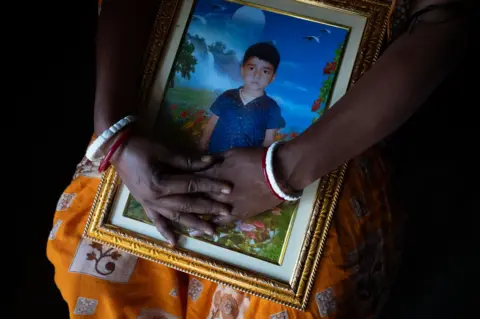 swastika
swastikaMangala Pradhan will never forget the morning she lost her one-year-old son.
That was 16 years ago, in the unforgiving Sundarbans – a vast delta of 100 islands in India’s West Bengal state. Her son Ajit, who had just started walking, was full of life: frisky, restless, and curious about the world.
That morning, like many others, the family was busy with their daily chores. Mangala had fed him breakfast and took him to the kitchen while she cooked. Her husband was going out buying vegetables, and her sick mother-in-law was settling down in another room.
But Little Ajit, always eager to explore, retreated unnoticed. Mangala shouted for her mother-in-law to watch it, but there was no response. Minutes later, when she realized how calm she was, she panicked.
“Where is my son? Has anyone seen my son?” I shouted. Neighbors rushed to help.
Despair quickly turned into heartbreak when her brother-in-law found Ajit’s little body floating in the pond at The yard outside their fallen house. The little boy had wandered off and slipped into the water—a moment of innocence had turned into an unimaginable tragedy.

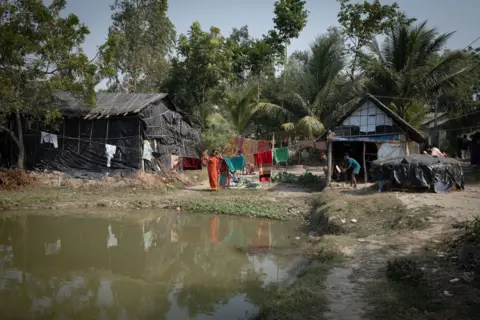 swastika
swastikaToday, Mangala is one of 16 mothers in the area who walk or cycle to two makeshift sheds set up by the nonprofit where they care, feed and educate about 40 children, dropped off by their parents on their way to work. “These mothers are saviors of children who are not their own,” says Sujoy Roy of the Children’s Need Institute (CINI), which created the cribs.
The need for this care is urgent: countless children continue to drown in this riverine region, dotted with ponds and rivers. Every house has a pond used for bathing, washing and even drawing drinking water.
A 2020 survey by medical research organisation, The George Institute and CINI found that nearly three children aged between one and nine drowned every day in the Sundarbans. It peaks in July, when the monsoon rains begin, and between ten in the morning and two in the afternoon. Most of the children were not supervised at that time as the caregivers were busy with household chores. About 65% drowned within 50 meters of home, and only 6% received care from licensed doctors. Health care was a mess: hospitals were scarce and many public health clinics were opaque.

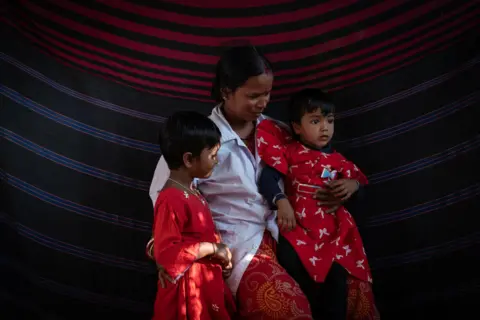 swastika
swastikaIn response, the villagers clung to ancient superstitions to save the rescued children. They wove the child’s body onto the head of an adult, chanting. They beat water with sticks to ward off spirits.
“As a mother, I know the pain of losing a child,” Mangala told me. “I don’t want any other mother to have to endure what I did. I want to protect these children from drowning. We live in a lot of dangers anyway.”
Life in the Sundarbans, home to four million people, is a daily struggle.
Tigers, known for attacking humans, wander dangerously close to and into crowded villages where poor people hang out Live, often squatting on the ground.
People fish, collect honey and collect crabs under the constant threat of tigers and venomous snakes. From July to October, rivers and ponds swell due to torrential rains, typhoons that blast the region, and swirling waters that swallow villages. Climate change increases uncertainty. Nearly 16% of the population here is between the ages of one and nine.

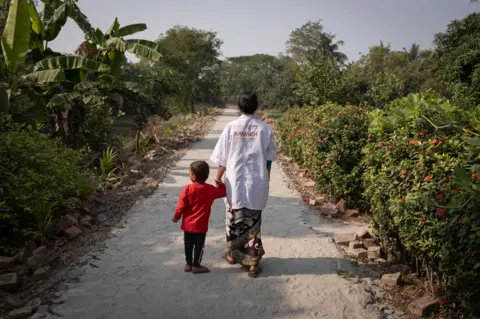 swastika
swastika“We have always coexisted with water, unaware of the dangers, until tragedy strikes,” says Sujata Das.
Sujatha’s life turned around three months ago when her 18-month-old daughter, Ambika, drowned in the pond at the joint family home in Koltali.
Her sons were in their training classes, some family members had gone to the market, and the elderly aunt was busy working at home. Her husband, who usually works in the southern state of Kerala, was home that day, mending a fishing net on the nearby style track. Sujata had gone to fetch water to a local hand pump as the promised water connection at her residence did not materialise.
“Then we found her floating in the pond. It rained, and the water rose. We took her to a local quack, who declared him dead. This tragedy woke us up to what we should do to prevent such tragedies in the future,” says Sujata.

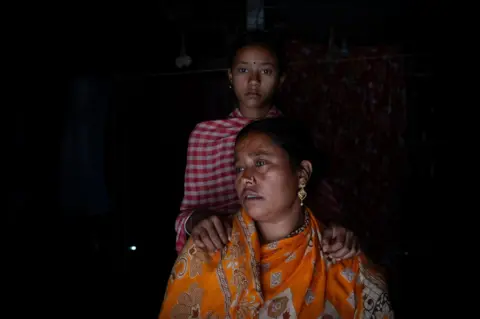 swastika
swastikaSujata, like others in the village, plans to fence her pond with bamboo and netting to prevent children from wandering into the water. She hopes that children who don’t know how to swim can be taught in the village pools. She wants to encourage neighbors to learn CPR to provide life-saving aid to save drowning children.
“Children don’t vote, so the political will to address these issues is often nonexistent,” Roy says. “That’s why we focus on building local resilience and spreading knowledge.”
Over the past two years, about 2,000 villagers have received CPR training. Last July, a villager saved a drowning child by reviving him before sending him to hospital. “The real challenge is creating the rocks and raising awareness among the community,” he adds.
Implementing simple solutions is difficult because of costs and local beliefs.

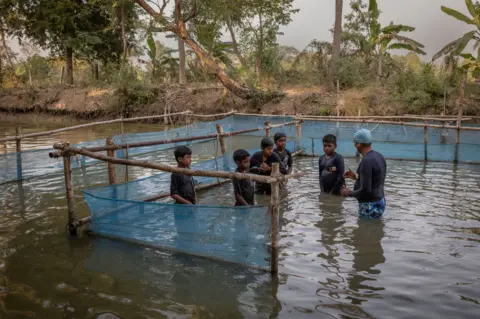 swastika
swastika
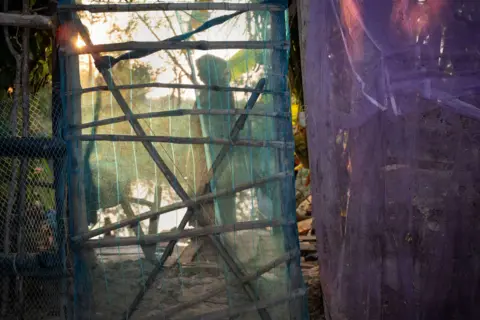 swastika
swastikaIn the Sundarbans, superstitions about the wrath of the water gods made it difficult to get people to water their ponds. In neighboring Bangladesh, where drowning is the leading cause of death for children as young as four, a wooden playhouse has been introduced in courtyards to keep children safe. However, compliance was low – children disliked them, and villagers often used them for their goats and ducks. “This created a false sense of security, and drowning rates increased very little over three years,” says Jagnoor Jagnoor, an epidemiologist at the George Institute.
Ultimately, the nonprofit created 2,500 toys in Bangladesh, cutting drowning deaths by 88%. In 2024, the government expanded this to 8,000 centres, resulting in 200,000 children annually. Water-rich Vietnam has focused on children ages six to 10, using decades of mortality data to develop policies and teach survival skills. This reduced drowning rates, especially among schoolchildren traveling on waterways.

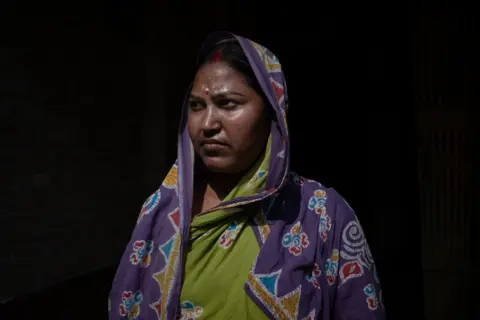 swastika
swastika
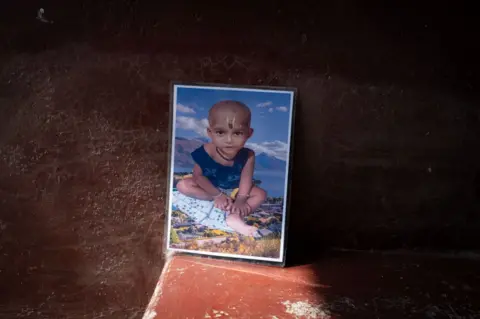 swastika
swastikaDrowning remains a major global issue. In 2021, an estimated 300,000 people drowned — more than 30 lives lost every hour, according to the World Health Organization. Nearly half were under 29, and a quarter were under five. India’s data is scant, officially recording about 38,000 drowning deaths in 2022, although the actual number is likely much higher.
In the Sundarbans, harsh reality is always present. For years, children were either allowed to roam freely or tied with ropes and cloth to prevent wandering. Jingling bugs have been used to alert parents to their children’s movements, but in this unforgettable water-themed landscape, nothing really feels safe.
Kakoli Das’s six-year-old son stepped into an overflowing pond last summer while delivering a piece of paper to a neighbor. Unable to distinguish between road and water, Ishaan drowned. He suffered from seizures as a child and could not learn to swim because of the risk of fever.
“Please, I implore every mother: fence your ponds, learn how to revive babies and teach them how to swim. This is about saving lives. We can’t wait,” says Kakoli.
For now, Creshes serves as a beacon of hope, providing a way to keep children safe from the dangers of the water. On a recent afternoon, four-year-old Manik Pal sang a delightful refrain to remind his friends: I won’t go to the pool alone/Unless my parents are with me/I’ll learn to swim and stay afloat/And live my life free from fear.
https://ichef.bbci.co.uk/news/1024/branded_news/9a3c/live/9e570ff0-d958-11ef-902e-cf9b84dc1357.jpg
2025-01-27 00:13:00







